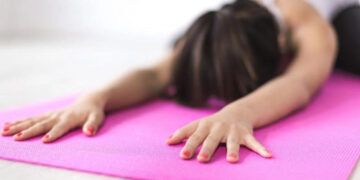In today’s world, where environmental consciousness is on the rise, the yoga community is embracing eco-friendly alternatives to traditional yoga equipment. One such alternative that has gained significant traction is the cork mat. As more yogis prioritize sustainability, cork mats are emerging as a popular choice for practitioners seeking harmony not only within themselves but also with the planet. Let’s delve into the world of eco-friendly yoga and explore why cork mats are making waves in the yoga world.
The Environmental Impact of Traditional Yoga Mats
Traditional yoga mats are often made from synthetic materials such as PVC, rubber, or foam. While these materials provide cushioning and support during practice, they come with a significant environmental cost. PVC, for example, is non-biodegradable and releases harmful toxins during production and disposal. Rubber and foam mats, although less toxic, still contribute to pollution and resource depletion.
Why Cork?
Cork, derived from the bark of cork oak trees, offers a sustainable alternative to traditional yoga mat materials. Unlike PVC, rubber, or foam, cork is a renewable resource that can be harvested without harming the tree. This makes cork mats an environmentally friendly choice for eco-conscious yogis. Additionally, cork is naturally antimicrobial, meaning it resists mold, mildew, and odor, making it ideal for yoga practice.
Features and Benefits of Cork Mats
Cork mats boast several features that make them appealing to yoga practitioners. Firstly, cork’s natural grip and traction improve stability and prevent slipping during poses, even when the practitioner sweats. Moreover, cork’s cushioning provides comfort and support, making it suitable for practitioners of all levels. Additionally, cork mats are durable and long-lasting, ensuring years of use without deterioration.
The Rise of Cork Mats in the Yoga World
As awareness of environmental issues grows within the yoga community, more practitioners are seeking sustainable alternatives to traditional mats. Cork mats have garnered attention for their eco-friendly properties and superior performance. Influencers and celebrities advocating for sustainability have further popularized cork mats, leading to their increased adoption among yogis worldwide.
Cork Mats vs. Traditional Mats: A Comparison
When comparing cork mats to traditional mats, several factors come into play. In terms of performance and durability, cork mats often outshine their synthetic counterparts. They offer excellent grip, even in hot and humid conditions, and are resistant to wear and tear. From an environmental standpoint, cork mats have a significantly lower ecological footprint compared to PVC, rubber, or foam mats. While the initial cost of cork mats may be higher, their longevity and sustainability make them a cost-effective choice in the long run.
How to Choose the Right Cork Mat
Selecting the perfect cork mat involves considering factors such as thickness, density, texture, and grip. Thicker mats provide more cushioning, while denser mats offer greater stability. Texture and grip are essential for preventing slippage during practice. Additionally, look for cork mats that are certified by reputable organizations for sustainability and eco-friendliness.
Maintaining Your Cork Mat
To prolong the life of your cork mat, proper maintenance is crucial. Regular cleaning with a gentle soap and water solution helps remove dirt and sweat, preserving its integrity. Avoid exposing your cork mat to direct sunlight for extended periods, as this can cause it to dry out and crack. With proper care, your cork mat can accompany you on countless yoga journeys.
The Future of Eco-Friendly Yoga Equipment
As the demand for sustainable products continues to rise, the future of eco-friendly yoga equipment looks promising. Innovations in materials and manufacturing processes are driving the development of new, environmentally friendly alternatives. By making conscious choices in their yoga practice, practitioners can contribute to a healthier planet and inspire others to follow suit.
Conclusion
In the quest for holistic well-being, yoga practitioners are increasingly turning to eco-friendly alternatives such as cork mats. With their sustainable properties, superior performance, and positive impact on the environment, cork mats are revolutionizing the yoga world. By embracing eco-friendly practices, yogis can align their practice with their values and tread lightly on the Earth.
Unique FAQs
- Are cork mats suitable for hot yoga?
- Yes, cork mats are excellent for hot yoga as they provide natural grip and traction, even when sweating profusely.
- How do I clean my cork mat?
- Simply wipe down your cork mat with a gentle soap and water solution after each use. Avoid harsh chemicals that can damage the cork.
- Do cork mats retain odor?
- No, cork mats are naturally antimicrobial, meaning they resist mold, mildew, and odor, keeping your practice space fresh and clean.
- Can cork mats be recycled?
- While cork mats are biodegradable, they can also be recycled into other cork products, minimizing waste and maximizing sustainability.
- Are cork mats suitable for beginners?
- Absolutely! Cork mats offer stability, comfort, and support, making them perfect for practitioners of all levels, including beginners.













































